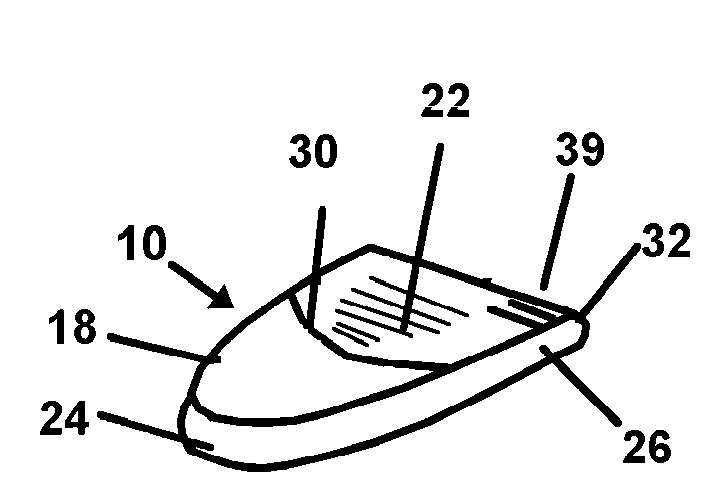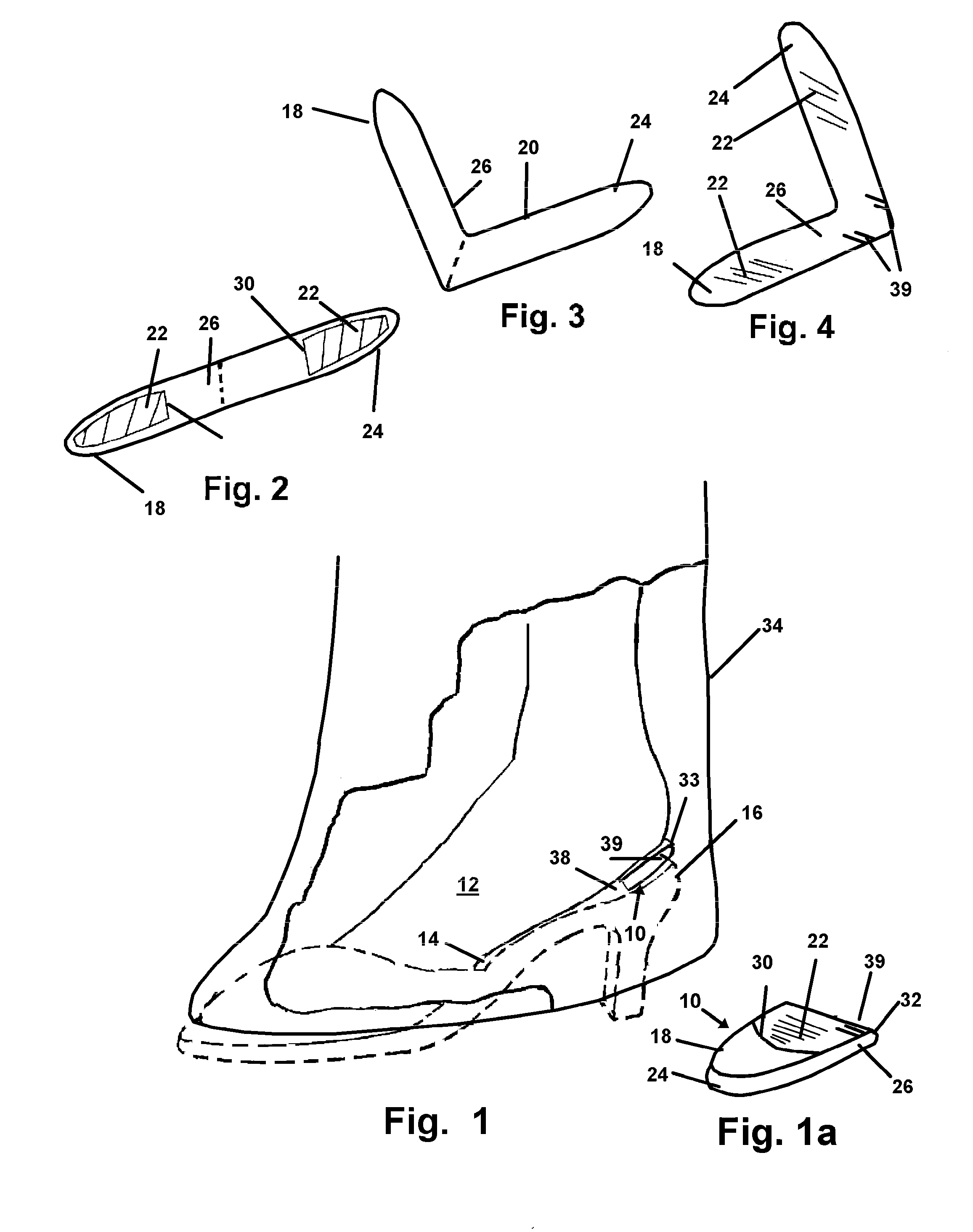Barrier for Open Heeled Footwear
a technology for preventing shoes and shoes, which is applied in the field of clothing, can solve the problems of catching the fabric at the distal end of the skirt, slipping, and slipping of clothing components, and achieves the effect of small width profile and convenient storage in a purse or pock
- Summary
- Abstract
- Description
- Claims
- Application Information
AI Technical Summary
Benefits of technology
Problems solved by technology
Method used
Image
Examples
Embodiment Construction
[0031]Referring now to the drawings in FIGS. 1-4, wherein similar components are identified by like reference numerals, there is seen in FIG. 1, the device 10, mounted and in the as-used position, engaged to the foot 12 of the user, and the top surface 14 of open-heeled footwear 16.
[0032]As depicted in FIGS. 1 and 1a, in the as-used position, a first end 18 of the body 20 of the device 10 engages upon the foot 12 of the user on the lower heel. Engagement is provided using means for removable engagement such as adhesive 22 operatively positioned on one surface of the first end 18.
[0033]The second end 24 of the body 20 is separated from the first end 18 of the body 20 by a mid portion 26. The first end 18 and second end 24 while shown as mirrored ends of the body 20 might be any shape adapted to fit under the user's foot 12 on one portion and upon the top surface 14 of the shoe 16 on the other portion.
[0034]The adhesive 22 on both the first end 18 and second end 24 may be a peel-and-s...
PUM
 Login to View More
Login to View More Abstract
Description
Claims
Application Information
 Login to View More
Login to View More - R&D
- Intellectual Property
- Life Sciences
- Materials
- Tech Scout
- Unparalleled Data Quality
- Higher Quality Content
- 60% Fewer Hallucinations
Browse by: Latest US Patents, China's latest patents, Technical Efficacy Thesaurus, Application Domain, Technology Topic, Popular Technical Reports.
© 2025 PatSnap. All rights reserved.Legal|Privacy policy|Modern Slavery Act Transparency Statement|Sitemap|About US| Contact US: help@patsnap.com


